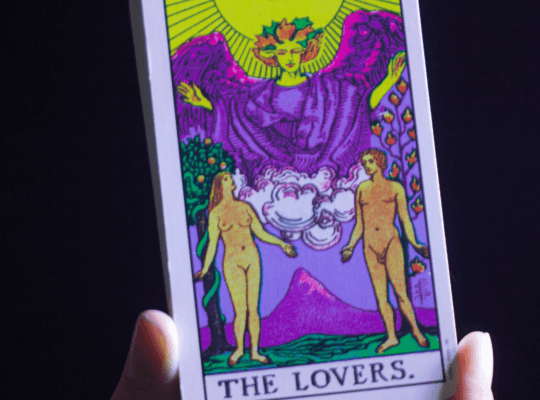Embarking on your tarot journey can be an exciting and transformative experience. One of the first steps in becoming a tarot reader is choosing the right tarot deck. With so many decks available—each with its own unique artwork, symbolism, and energy—it can be overwhelming for a beginner to know where to start.
In this blog post, we’ll guide you through the process of choosing your first tarot deck, offering tips and advice on how to select the one that resonates with you the most.
What Is a Tarot Deck?
A tarot deck typically consists of 78 cards, split into two main sections: the Major Arcana and the Minor Arcana. The Major Arcana consists of 22 cards representing significant life themes, archetypes, and spiritual lessons, while the Minor Arcana consists of 56 cards that cover everyday situations, emotions, and experiences.
Each card in a tarot deck features symbolic imagery that helps convey the card’s meaning, which can be interpreted in various ways depending on the context of the reading.
However, the art and design of the deck are what truly set different tarot decks apart. The imagery on each card will affect how you connect with the tarot. As a beginner, it’s important to choose a deck that speaks to you emotionally and intuitively.
Factors to Consider When Choosing Your First Tarot Deck
Your Personal Style and Taste
The most important factor in choosing your first tarot deck is how the artwork resonates with you. Tarot decks come in a wide range of styles, from traditional, classical imagery to modern, abstract, or even whimsical designs. Think about what kinds of art, aesthetics, and symbolism attract you the most.
If you prefer classic designs, the Rider-Waite-Smith deck is one of the most popular and widely recognized. It features colorful, detailed imagery that is deeply rooted in traditional symbolism. If you’re drawn to something more modern or unconventional, decks like The Wild Unknown or Cosmic Tarot offer a more minimalist or contemporary approach.
Consider the following when browsing through tarot decks:
Art Style: Do you gravitate toward more vibrant, detailed illustrations, or do you prefer a minimalist approach?
Color Palette: Pay attention to whether the deck uses bright, bold colors or muted tones. This can affect how you feel when reading.
Symbolism: Think about whether you want a deck with traditional symbols or one that incorporates more modern or personalized images.
2. Connection and Intuition
Tarot is as much about intuition as it is about interpretation. The right deck should “speak” to you, meaning it should spark a connection that makes you excited to learn and read with it. When flipping through a deck for the first time, take note of how it makes you feel. Do you feel drawn to the images? Do the colors, characters, or symbols evoke strong feelings?
It’s important to trust your intuition when choosing your first tarot deck. Don’t overthink it—sometimes, the deck you feel most connected to will be the one that resonates most with your energy and intentions.
3. Consider the Card Size and Quality
The size of the cards is another important factor to consider. Tarot decks come in a range of sizes, from standard to oversized or mini decks. If you have smaller hands, a large deck might be difficult to shuffle or hold. Likewise, smaller decks can be harder to interpret if you have trouble seeing the details.
It’s also important to consider the quality of the cards. Look for a deck made with sturdy cardstock, as this ensures durability and ease of shuffling. A good quality deck will make your tarot experience more enjoyable and last longer. Many beginner decks come in sturdy boxes with guidebooks, which can be helpful for learning.
Additionally, some decks come with additional materials like informational booklets, art prints, or a booklet with tarot card meanings, which may enhance your experience as you begin your journey.
4. The Tarot Guidebook
Most tarot decks come with a guidebook that helps you interpret the cards. Some decks offer detailed descriptions of each card’s meaning, while others provide more succinct or poetic interpretations. If you’re just starting, a detailed guidebook can be an invaluable resource for learning how to interpret the cards and their symbolism.
Some tarot decks have guidebooks that go deeper into the history and symbolism behind each card, while others focus more on the intuitive aspects of the readings. When choosing a deck, consider whether the guidebook’s approach matches your learning style. For example, if you prefer a traditional approach to learning tarot, you might opt for a deck like the Rider-Waite-Smith that has been widely studied and has many resources available for beginners. On the other hand, if you prefer a more intuitive, modern approach, decks like The Wild Unknown Tarot or The Fountain Tarot offer guidebooks with a more experiential approach to reading.
5. Consider Your Purpose for Tarot
Before purchasing your tarot deck, think about your primary purpose for using the cards. Are you using tarot for self-reflection, guidance, or spiritual development? Do you want a deck that focuses more on personal growth and healing, or one that is geared toward divination and fortune-telling?
If you’re using tarot primarily for meditation and self-discovery, a deck with peaceful, gentle imagery (such as the Herb Crafters Tarot or Dreamkeepers Tarot) might be more appropriate. On the other hand, if you’re interested in using tarot to gain insights about your future or the people around you, a deck with more vibrant, bold imagery might better suit your needs.
Choosing a deck that aligns with your intentions will make it easier to connect with the cards and integrate them into your daily life.
6. Reviews and Recommendations
When choosing your first tarot deck, it can be helpful to read reviews or watch unboxing videos. Many tarot enthusiasts post reviews on YouTube, Instagram, or blogs where they share their personal experiences with various decks. This can give you a closer look at the art style, quality, and the overall energy of the deck.
Additionally, you can ask for recommendations from friends, online tarot communities, or your local metaphysical store. The tarot community is often filled with people willing to share their thoughts on their favorite decks, so don’t hesitate to ask for advice.
7. Popular Tarot Decks for Beginners
While the choice of deck is ultimately personal, there are a few decks that are widely recommended for beginners due to their clear symbolism, approachable artwork, and easy-to-understand guidebooks:
Rider-Waite-Smith Tarot: This is the most well-known tarot deck and is often recommended for beginners. It features clear, symbolic imagery that is easy to interpret and widely used in tarot literature.
The Wild Unknown Tarot: A more modern deck with minimalist illustrations, known for its beautiful, hand-drawn artwork and intuitive meanings.
The Light Seer’s Tarot: This deck is popular for its vibrant, contemporary artwork and positive energy. It’s excellent for those seeking a more uplifting, empowering approach to tarot.
The Fountain Tarot: Known for its elegant, artistic style, The Fountain Tarot combines traditional symbolism with a modern twist, making it a great deck for both beginners and experienced readers.
The Modern Witch Tarot: A diverse, contemporary deck that reimagines the traditional tarot archetypes with a more modern perspective.
Final Thoughts
Choosing your first tarot deck is a deeply personal decision, and there’s no right or wrong answer. The most important thing is to select a deck that feels connected to you, one that makes you excited to learn and practice tarot. Trust your intuition, consider your preferences in terms of art and symbolism, and think about how you want to use the tarot in your life.
Remember, your tarot deck is more than just a tool for divination—it’s a companion on your personal and spiritual journey. By choosing a deck that resonates with your energy, you’ll begin a relationship with the cards that will provide guidance, insight, and growth for years to come.



